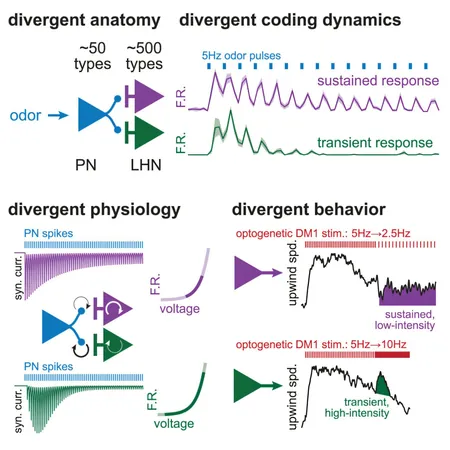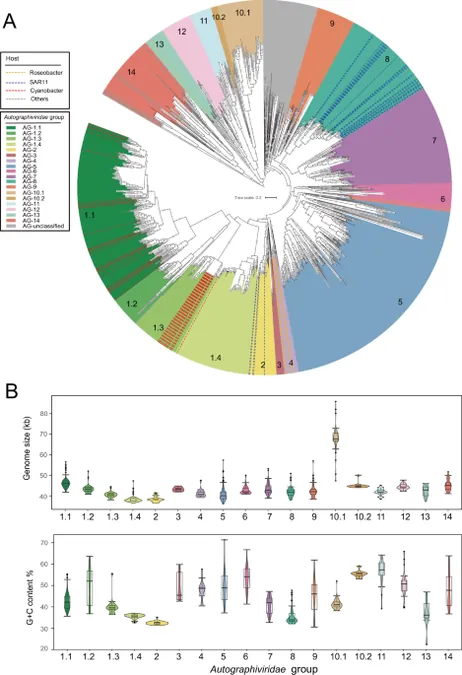
Revolutionary Discoveries: One Neuron, Two Behaviors in Fruit Flies!
2025-07-07
Author: Siti
Unlocking the Secrets of Fruit Fly Neural Functionality
Imagine a single neuron in the brain of a tiny fruit fly orchestrating not one, but two distinct behaviors! That's precisely what groundbreaking research from Yale University has uncovered. Neuroscientists have long held the belief that neurons have specialized functions, but emerging evidence indicates that some can multitask beautifully.
Dual Signals from a Single Source
According to a recent study featured in Current Biology, a unique olfactory neuron in fruit flies communicates with two downstream neurons, triggering different responses to the same scent. Researchers found that these divergent electrical signals allow the flies to react in multiple ways when they detect the alluring aroma of ripe, decaying fruit.
A New Era in Neuroscience: The Multifunctional Neuron
This study expands a growing body of work demonstrating that various species—from crayfish to humans—harbor these multifunctional neurons. "These divergent dynamics truly amazed me," states James Jeanne, Ph.D., the study's senior author. "It seems to be a recurring theme in neuroscience, yet its functional significance has remained enigmatic."
Deciphering the Fruit Fly Brain
To unravel the complexities of how animals, including fruit flies, process sensory information, scientists are mapping the intricate networks of neurons. With around 140,000 neurons, fruit flies offer a relatively simpler model compared to humans, who have billions. While researchers have successfully deciphered the first layers of the fruit fly olfactory system, mysteries abound beyond these initial connections.
A Closer Look at Neuronal Reactions
During his research, graduate student Hyong Kim noticed a strikingly diverse response among neurons in the third layer of the olfactory system to the same scent. This prompted a deeper investigation into how these neurons transitioned from second-order to third-order signal processing, revealing new aspects of neural behavior.
The Experiment: Neurons in Action
To further investigate, Jeanne and his team examined the electrical activity of neurons in response to ethyl acetate, a potent signal of rotting fruit. They discovered that a singular receptor neuron sends a consistent message to a glomerular projection neuron (PN), which in turn communicates with multiple third-order neurons. Their focus was on two specific neurons known as Lateral Horn Neuron 1 (LHN1) and Lateral Horn Neuron 2 (LHN2).
Different Behaviors from Different Responses
In their experiments, they exposed fruit flies to this fruity scent and noted that while both LHN1 and LHN2 received the same signal, their responses were unique. LHN1 maintained a constant electrical activity while LHN2 exhibited a rapid spike before fading.
Genetic Modification for Insight
To analyze how these differential signals impacted behavior, the researchers genetically modified flies to disable either LHN1 or LHN2. In simulations that mimicked the smell of rotting fruit, they observed fascinating outcomes. Without LHN2, flies did not accelerate towards the scent as expected, while those lacking LHN1 still moved towards it but halted when the smell weakened.
Why Does This Matter?
These findings suggest that the same message—detection of rotting fruit—can convey two distinct behavioral instructions through different neural pathways, a phenomenon pointing to evolutionary efficiency. "This could mean condensing complex information into a single neuron pathway," Jeanne explains.
Looking Ahead: Mapping the Neural Mysteries
Jeanne's future research aims to uncover the structural nuances of these neuronal connections, potentially revealing how specific attributes influence neural signaling patterns. With a comprehensive map of the fruit fly brain's neural connections recently completed, the field is on the brink of translating these intricate structures into actionable functions.
Conclusion: The Future of Neuroscience Awaits
These revelations not only challenge long-standing assumptions about neuronal roles but also pave the way for innovative exploration into the brain's complex architecture and functionality. Who knew that the world of tiny fruit flies could hold such groundbreaking potential for understanding our own neural systems?



 Brasil (PT)
Brasil (PT)
 Canada (EN)
Canada (EN)
 Chile (ES)
Chile (ES)
 Česko (CS)
Česko (CS)
 대한민국 (KO)
대한민국 (KO)
 España (ES)
España (ES)
 France (FR)
France (FR)
 Hong Kong (EN)
Hong Kong (EN)
 Italia (IT)
Italia (IT)
 日本 (JA)
日本 (JA)
 Magyarország (HU)
Magyarország (HU)
 Norge (NO)
Norge (NO)
 Polska (PL)
Polska (PL)
 Schweiz (DE)
Schweiz (DE)
 Singapore (EN)
Singapore (EN)
 Sverige (SV)
Sverige (SV)
 Suomi (FI)
Suomi (FI)
 Türkiye (TR)
Türkiye (TR)
 الإمارات العربية المتحدة (AR)
الإمارات العربية المتحدة (AR)